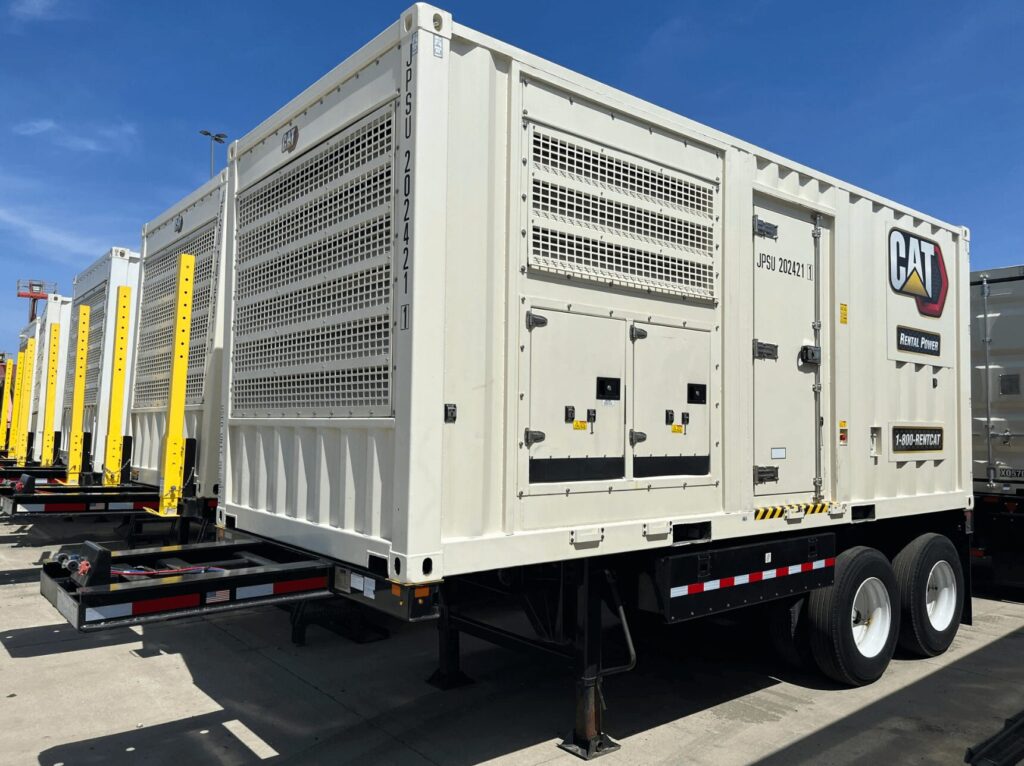Updated for 2025–2026: Harris County has adopted backup power requirements for certain senior-care facilities in unincorporated areas of the county, intended to keep heating, ventilation, and air conditioning (HVAC) systems and other life-safety systems operational during power outages. For the latest official guidance, always review the Harris County Fire Marshal’s Office (HCFMO) Backup Power Supply FAQ.
When facilities need immediate resilience—or an interim plan while permanent systems are being designed and installed—Stag Power Rentals provides commercial and industrial generator rentals from 20 kW to 2,000 kW, serving Harris County, the Greater Houston area, and across the Gulf Coast.
Why Backup Power Became a Priority
Harris County has experienced repeated and prolonged grid disruptions from hurricanes, severe storms, and winter weather. In extreme heat or cold, loss of HVAC can endanger the lives of residents in assisted living and nursing facilities. Backup power ensures essential systems remain operational, protecting health and safety during utility outages.
Scope of the County Requirement
The requirement applies to facilities classified as:
- I-1 occupancies – Assisted living facilities housing 16 or more residents
- I-2 occupancies – Nursing homes
It applies to those facilities located in unincorporated Harris County. Smaller residential care occupancies, such as those classified under R-4, are not covered by this specific requirement. See the HCFMO FAQ for full details.
Compliance Options
Facilities have two primary compliance paths, as outlined by the HCFMO:
- Shoreline connection to allow a mobile generator to be brought in and connected during an outage, with the system operational within three hours of power loss (per HCFMO FAQ).
- Permanent on-site backup power system capable of supplying the required systems automatically during an outage.
Systems That Must Be Powered
According to the HCFMO Backup Power Supply FAQ, facilities must ensure backup power for:
- HVAC systems to maintain safe temperatures in occupied areas
- Fire alarm systems
- Means of egress illumination
- Electric locks and doors where used for egress or resident safety
- Emergency responder communication enhancement systems (if installed)
- Refrigeration for medications and perishable food
- Booster pumps for potable water in buildings three or more stories
- At least one elevator for evacuation in buildings four or more stories
Impacts of Power Outages
Health and Safety Risks
Loss of HVAC can create dangerous indoor temperatures. Essential medications requiring refrigeration may spoil, and life-safety systems may fail without backup power.
Operational Disruption
Facilities without backup power may need to relocate residents, interrupt care services, and close to new admissions until power is restored.
Restoration Timelines
Power restoration after major weather events can range from short-term interruptions to extended outages, depending on the scale of damage, utility repair priorities, and accessibility of affected areas. Facilities should plan for scenarios in which power is unavailable for an extended period.
Generator Size Ranges vs. Business Types
| Generator Size Range | Representative Use Cases |
|---|---|
| 20–40 kW | Small professional offices, boutique retail, small medical or dental practices |
| 50–80 kW | Mid-size retail stores, small clinics, small assisted living cottages, small restaurants |
| 100–150 kW | Standalone restaurants, larger medical offices, small grocery stores |
| 175–250 kW | Community clinics, multi-tenant offices, mid-size assisted living facilities (partial HVAC loads) |
| 300–400 kW | Cold-storage areas, mid-size hotels, multi-zone HVAC for assisted living |
| 500–600 kW | Larger assisted living facilities, multi-story offices, research labs |
| 700–800 kW | Hospital support buildings, larger clinic campuses, large cold-storage facilities |
| 900–1,000 kW | Large nursing homes, large hotels, distribution centers |
| 1,100–1,250 kW | Small hospital core loads, large educational facilities |
| 1,500–2,000 kW | Large hospital essential loads, enterprise data centers, large industrial facilities |
Note: Sizing must be determined by a qualified professional through a load study and in compliance with all applicable codes.
How Stag Power Rentals Supports Compliance
- Generator rentals from 20 kW to 2,000 kW to fit a wide range of needs
- Temporary distribution equipment, cabling, and fuel tanks
- Rapid mobilization for storm-readiness and emergency deployment
- Coordination with facility teams and authorities having jurisdiction
Learn more: Generator Rentals for Houston and Harris County
Enforcement and Inspections
The HCFMO has indicated it will focus on working with facilities toward compliance and will include backup power in annual inspections. Refer to the HCFMO Backup Power Supply FAQ for the most current enforcement approach.
Communities Impacted
This requirement applies to unincorporated Harris County, which may include areas with Houston mailing addresses as well as communities such as Crosby, Huffman, Channelview, Atascocita, Highlands, and other unincorporated neighborhoods. Facilities should confirm their jurisdictional status with the county.
Embedded: County Announcement Video
Harris County Precinct 4 Commissioner Lesley Briones and Fire Marshal Chief Laurie Christensen announce backup power requirements for senior facilities (streamed Jan 8, 2025).
Conclusion
Backup power is now a code requirement for certain facilities in unincorporated Harris County. The safest course for operators is to review the HCFMO Backup Power Supply FAQ, determine the appropriate compliance path, and secure interim or permanent power solutions. Stag Power Rentals can help with generator solutions sized from 20 kW to 2,000 kW to keep critical systems operational during outages.


